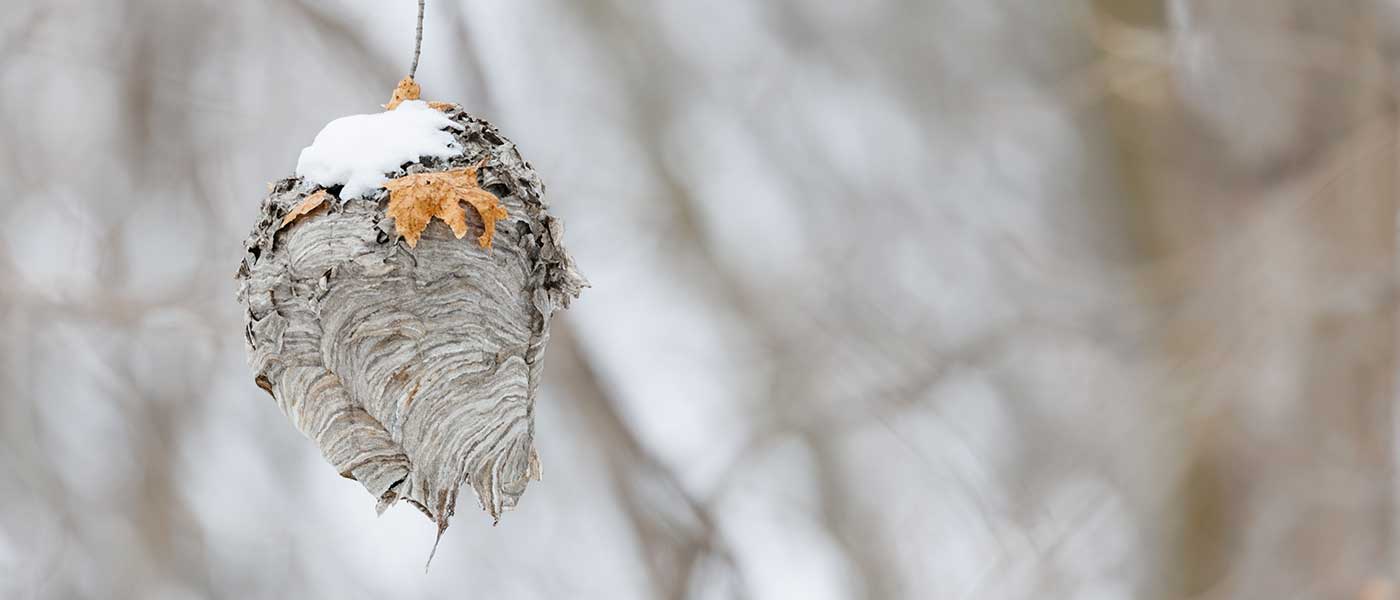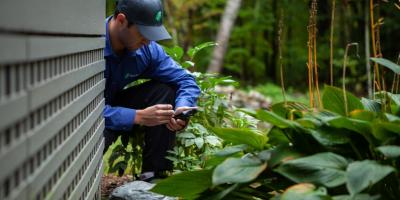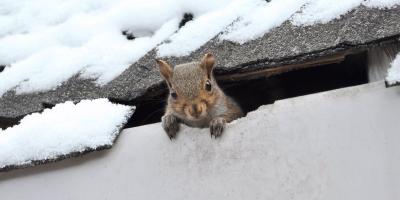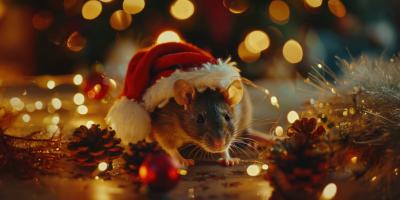Overwintering Wasps: What’s the buzz with stinging pests in winter?

Overview of Overwintering Insects:
Most of us who have spent several winters in New England know the drill, the invasion begins in late summer with cluster flies, usually in August, and continues right into November for the other bugs. Unfortunately, the bug names are becoming all too familiar: stink, boxelder, and western conifer seed, and then there are the lady beetles. However, the queen wasps are not commonly documented as fall invaders. There are two common paper wasp varieties we deal with in New England including our native brown variant and the European (invasive species). The European paper wasp goes by many common names, and they are distinguished by their yellow and black body color pattern, like yellowjackets, and therefore are often confused with them.
In late summer and early fall, paper wasp females prepare to overwinter by mating and then seeking shelter. This behavior takes them away from their natal, partially lit nests to areas deep within the dark recesses of attic insulation and crevices. They harbor here until warm sunny days in late winter waken them from their slumber, sometimes as early as MLK Day. Problem is, like other wasps with which they share space, they don’t remember how they got to be where they now find themselves. It seems, fall was too long ago for their memory banks, so they simply follow warm air currents and light, which puts them in direct conflict with unsuspecting occupants.
To make matters worse, young children and many pets are unaware of the danger of these wondering, out of season wasps and inadvertently get stung. Only a few home and business owners know what to do. Rest assured, there are no nests to ‘search and destroy’, just gaps around windows, vents, doors, and so on to mend and seal. You would also be forgiven for thinking that all overwintering wasps could be eradicated from your attic by launching your remediation assault plan in late winter on that perfect ‘spring’ day. Unfortunately, these and other invaders hedge their bets by not becoming active all at once on the same day. So, it is possible to knock out some, but never all your winter freeloaders.
Where are their nests then?
All wasps and most bee colonies, except honey bees, are annual, which means they must build a new nest each year. The old nests are taken down by the weather or scavengers, and even if they remain intact, are not reused. Upon their emergence in spring, each new queen must start their colony anew. Queen wasps forage for weathered wood fibers and mix them with saliva to make their own ‘paper mache’ nest cells. Again, these wasps are not practicing nest-building inside or outside of structure during the winter but could emerge periodically when temperatures are above seasonal normal.
Wouldn’t it make sense to kill all these queens to reduce new nests?
The answer is “surprisingly, not”. Queens are so numerous that the number overwintering in your home represents a very small fraction of the population. Also, the nest establishment success rate for these females is very, very low. Studies have shown that reducing or eliminating overwintering queens in a structure does not significantly change the number that establish nests in summer. However, stopping them from invading by closing construction gaps or performing fall invader insecticide applications will greatly reduce or eliminate the stinging threat prior to spring nest-building and for subsequent overwintering seasons.
10 things homeowners can do to reduce wasp activity:
- Remove food sources: trash cans, recycle bins, compost piles, fallen fruit, hummingbird feeders, uneaten pet foods, etc.
- Keep doors and windows shut and tightly screened.
- Inspect for nests regularly and before events. Early in their development, wasp nests are small and much easier to eliminate than are late season nests.
- Install fans in food/buffet areas and keep it out only for short periods. (some suggest making wasp feeding stations (wasp plates). Unfortunately, wasp traps (flying saucer traps) do not seem to reduce wasp issues significantly.
- Pick up trash and spills promptly (especially food items and cardboard). Keep garbage cans tightly closed.
- Install sticky traps or insect fly lights
- Don’t swat or kill wasps. Pheromones released by dying wasps will attract more wasps.
- Remove weathered wood or paint it. Wasps use wood fibers for their nesting materials and are highly attracted to wood that is falling apart.
- Seal penetrations to building interiors (voids) around wires, pipes, etc.
- Fill holes in soil (lawns, gardens) – especially rodent and chipmunk burrows (ground nesting yellowjackets use these to access nest areas/sites).
Things that have not been proven to work:
Ultra-sonic repellers, decoy nests, wasp traps, repellent sprays. Take care when working or moving around wasp nests. Give them a wide berth and move slowly. Sudden movements or contact with the nest can provoke an attack.
Bottom Line:
Regardless of the pest in question, controlling pests requires knowledge of pest biology and behavior as well as expertise, experience, and attention to detail. There is no silver bullet or magic pill. For stinging insects, like wasps, we are committed to keeping your family and pets safe. JP also offers a comprehensive Fall Invader Plan that will greatly reduce the number of overwintering pests before they enter the structure. As always, we at JP Pest Services strive to provide the best pest management services we can for homes and businesses. JP Pest Services is ready to meet whatever pest control challenges you may have!



